This article was medically reviewed by Kate Holcomb, MD. Dr. Kate Zibilich Holcomb is a Board Certified Dermatologist and the Founder of Pure Dermatology. She has over 15 years of experience in the field and specializes in cosmetic dermatology. Dr. Holcomb earned an MS in Public Health and Parasitology from The Tulane University School of Public Health and Tropical Medicine and an MD from Tulane University School of Medicine. She also completed her residency in dermatology as Chief Resident at Saint Luke’s-Roosevelt Hospital Mount Sinai. Dr. Holcomb is a member of the American Academy of Dermatology, American Society of Dermatologic Surgeons, American Acne and Rosacea Society, Skin of Color Society, North American Contact Dermatitis Society, Louisiana Dermatological Society, and Women’s Dermatologic Society.
There are 15 references cited in this article, which can be found at the bottom of the page.
This article has been viewed 22,251 times.
Vitiligo is a disorder that causes your melanocytes to stop producing pigment, which can cause your skin to develop lighter spots. It’s possible to have only one tiny area with depigmentation or larger patches that grow over time. Because vitiligo has much in common with other skin illnesses, your doctor will need to examine you thoroughly to make a diagnosis. They might also order a blood draw or eye test for more definitive answers. Then, once you’ve been diagnosed, you can work with your doctor to create a treatment plan.[1]
Steps
Identifying Vitiligo Symptoms
-
1Watch for a loss of pigmentation in your eyes or hair. Vitiligo typically affects your skin, but it can also drain the pigment away from other parts of your body, especially your hair or eyes. If your hair starts to go grey prematurely or turns grey within months, then make an appointment with your doctor.[2]
- Generally, doctors say that hair going grey prior to the age of 35 qualifies as “premature.”
- It’s even more uncommon for your eyes to change color past maturity. With vitiligo, your eyes may fade from brighter colors to more muted ones.
- Vitiligo can also change the color of your eyelashes, eyebrows, and facial hair.
-
2Check for parallel or clustered spots of depigmentation. With generalized vitiligo, you’ll get depigmented areas on parallel sides or spots of your body. These may grow larger as time passes. With segmental vitiligo, you’ll have a single patch of depigmentation or a collection of spots in one area of your body.[3]
- Generalized vitiligo is more common than segmental. Most people develop vitiligo prior to the age of 20.
- Some people also develop occupational vitiligo from being exposed to certain chemicals or production processes. In these cases, the loss of pigmentation is often concentrated in those areas that were in contact with chemicals.
- Vitiligo spots are most commonly found on your neck, armpits, hands, knees, elbows, or face. Loss of color inside of your mouth or nose can also be a symptom.
Advertisement -
3Monitor and disclose any personal or family history with skin disorders. If you visit the doctor and they suspect vitiligo, then they will likely ask you a number of questions about your family’s medical history. Try to answer all questions as truthfully as you can. In particular, some evidence shows that having other family members with skin disorders increases your odds of getting vitiligo.[4]
- For example, if your father or mother suffer from eczema, go ahead and mention this to your doctor.
- Your odds of developing vitiligo also increases if you’ve suffered from disorders, such as eczema.
-
4Trace the start of vitiligo back to a recent skin trauma. If you’ve suffered from a sunburn in the previous 2-3 months, it is possible that this might have helped to trigger an episode of vitiligo. Similarly, if you’ve had an unexplained rash, then tell your doctor about it. This could indicate vitiligo or another illness.[5]
- There is no exact medical cause for why some skin cells begin to lose their pigmentation resulting in vitiligo. However, other skin issues do provide warning signs in some cases.
Getting a Medical Diagnosis
-
1Let your doctor examine you with an ultraviolet (UV) lamp. This small, hand-held device is often called a “Wood’s lamp.” Your doctor will pass the lamp 4 to 5 inches (10 to 13 cm) over your skin and watch for any reaction. If you have vitiligo, your lighter skin patches will appear even more defined under the UV rays.[6]
- This is a great way for your doctor to rule out other conditions, such as fungal infections, which may appear the same when exposed to the lamp.
-
2Consent to an eye examination. In some situations, vitiligo can impact the structure and pigment of your eyes. A general practitioner might shine a bright light into your eyes to see if any issues are visible. Or, they might refer you to an optometrist who will inspect your eyes for inflammation, also called uveitis.[7]
- Let your doctor know if you’ve been suffering from any eye pains, itchiness or dryness. These are all signs of uveitis or possible eye damage.
- The optometrist may dilate your eyes using drops to check for uveitis.
-
3Test your blood. If your doctor takes a blood sample, then they might be able to narrow down any possible ailments. A simple blood draw can reveal whether or not your blood cell count has been impacted by illness. It can also indicate if your thyroid function is impaired, which might indicate an autoimmune condition.[8]
-
4Agree to a skin biopsy if the diagnosis is uncertain. If your doctor cannot determine your diagnosis on the basis of a physical examination, then they may suggest a biopsy of your skin. In most cases, you’ll receive local anesthesia and a small sample of skin will be removed with a needle. This sample will then be examined to see if the loss of pigment is consistent and if there is an absence of melanocytes in the skin, which indicates vitiligo.[9]
- If you are not comfortable consenting to a biopsy, another option is to go see a specialist, usually a dermatologist, for a second opinion or examination.
- A dermatologist may draw blood to test for antinuclear antibodies, which are often present in vitiligo patients.
Treating Vitiligo
-
1Rub on a medicated cream. Corticosteroids are the most commonly prescribed topical medication for vitiligo. When applied daily, these lotions can help to add skin color to lightened areas. Because of the serious possible side effects, including skin brittleness, only a doctor can prescribe these creams.[10]
- Medications applied topically are not as effective on all areas of the body, such as the feet.
-
2Apply cosmetics to minimize skin differences. Using skin dyes, makeup, or even tanning products can help to camouflage any patches of vitiligo. This is a cheaper option that makes it possible to avoid any of the concerns surrounding taking medication. However, applying these products can take a good amount of time and practice to master.[11]
-
3Consider light therapy if you have widespread vitiligo. This is a type of treatment that takes place at a hospital or professional medical setting. Each session will involve exposing your skin to concentrated UVA light twice a week for a period of 12 months or more. When combined with medication, light therapy can successfully restore pigment to some areas.[12]
- Avoid sun exposure and excessive light therapy if you have a diagnosis of vitiligo. Too much sun may put your skin at risk of further damage and accentuate abnormalities. Ask your doctor about how much light therapy is safe for you.
-
4Treat any current autoimmune diseases. If you suffer from an autoimmune illness, such as Hashimoto’s disease, work with an endocrinologist or your general practitioner to develop a treatment plan. You’ll likely need to take medications to boost your immune system. Doing so can decrease the likelihood that you’ll develop vitiligo.[13]
-
5Treat any underlying nutrient deficiencies. Your doctor may want to test you for nutrient deficiencies, since being deficient in certain nutrients can predispose you to vitiligo. If you are deficient in something, then you may need to take a supplement to get your nutrient levels back up to normal. Follow your doctor's instructions for supplementing. Some deficiencies that may contribute to you developing vitiligo include:
-
6Join a vitiligo support group. Talk with your doctor about attending an in-person, local group of people suffering from autoimmune or skin conditions, such as vitiligo. If there aren’t any groups nearby, look into joining an online organization, such as Vitiligo Support International.[17] These groups are also great resources for exchanging diagnosis and treatment information.[18]
- Although some spots may disappear on their own, vitiligo is usually a lifelong condition.
Expert Q&A
-
QuestionWhat triggers vitiligo to spread?
 Kate Holcomb, MDDr. Kate Zibilich Holcomb is a Board Certified Dermatologist and the Founder of Pure Dermatology. She has over 15 years of experience in the field and specializes in cosmetic dermatology. Dr. Holcomb earned an MS in Public Health and Parasitology from The Tulane University School of Public Health and Tropical Medicine and an MD from Tulane University School of Medicine. She also completed her residency in dermatology as Chief Resident at Saint Luke’s-Roosevelt Hospital Mount Sinai. Dr. Holcomb is a member of the American Academy of Dermatology, American Society of Dermatologic Surgeons, American Acne and Rosacea Society, Skin of Color Society, North American Contact Dermatitis Society, Louisiana Dermatological Society, and Women’s Dermatologic Society.
Kate Holcomb, MDDr. Kate Zibilich Holcomb is a Board Certified Dermatologist and the Founder of Pure Dermatology. She has over 15 years of experience in the field and specializes in cosmetic dermatology. Dr. Holcomb earned an MS in Public Health and Parasitology from The Tulane University School of Public Health and Tropical Medicine and an MD from Tulane University School of Medicine. She also completed her residency in dermatology as Chief Resident at Saint Luke’s-Roosevelt Hospital Mount Sinai. Dr. Holcomb is a member of the American Academy of Dermatology, American Society of Dermatologic Surgeons, American Acne and Rosacea Society, Skin of Color Society, North American Contact Dermatitis Society, Louisiana Dermatological Society, and Women’s Dermatologic Society.
Board Certified Dermatologist Well, vitiligo is a fairly unpredictable disease, and there is not much way to prevent it from spreading. It generally goes where it wants to.
Well, vitiligo is a fairly unpredictable disease, and there is not much way to prevent it from spreading. It generally goes where it wants to.
Warnings
- Vitiligo isn’t usually painful. If you experience pain along with skin changes, it is even more important to see your doctor as soon as possible.⧼thumbs_response⧽
References
- ↑ https://www.niams.nih.gov/health-topics/vitiligo/diagnosis-treatment-and-steps-to-take
- ↑ https://medlineplus.gov/genetics/condition/vitiligo/
- ↑ https://nyulangone.org/conditions/vitiligo/diagnosis
- ↑ https://www.ncbi.nlm.nih.gov/books/NBK559149/
- ↑ https://www.ncbi.nlm.nih.gov/books/NBK559149/
- ↑ https://www.nhs.uk/conditions/vitiligo/
- ↑ https://www.niams.nih.gov/health-topics/vitiligo/diagnosis-treatment-and-steps-to-take
- ↑ https://www.nhs.uk/conditions/vitiligo/
- ↑ https://dermnetnz.org/topics/vitiligo
- ↑ https://www.aad.org/public/diseases/a-z/vitiligo-treatment
- ↑ https://www.aad.org/public/diseases/a-z/vitiligo-self-care
- ↑ https://www.nhs.uk/conditions/vitiligo/treatment/
- ↑ https://nyulangone.org/conditions/vitiligo/treatments/topical-medication-for-vitiligo
- ↑ https://www.ncbi.nlm.nih.gov/pubmed/24177606
- ↑ https://www.ncbi.nlm.nih.gov/pmc/articles/PMC2807713/
- ↑ https://www.ncbi.nlm.nih.gov/pmc/articles/PMC5420602/
- ↑ https://rarediseases.org/organizations/vitiligo-support-international/
- ↑ https://www.aad.org/public/diseases/a-z/vitiligo-self-care
- ↑ https://www.aad.org/public/diseases/a-z/vitiligo-discomfort-stops-with-sunscreen



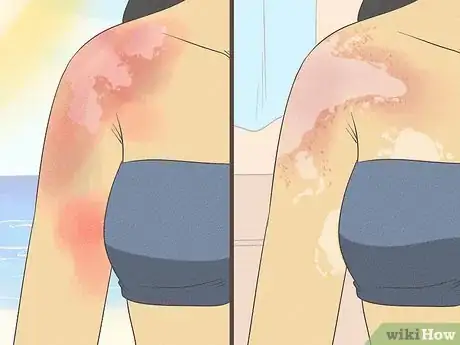

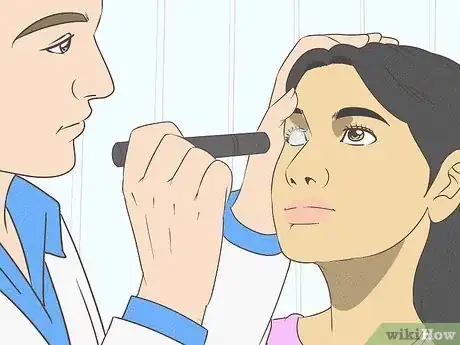
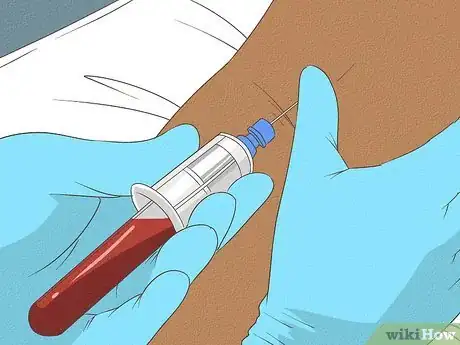
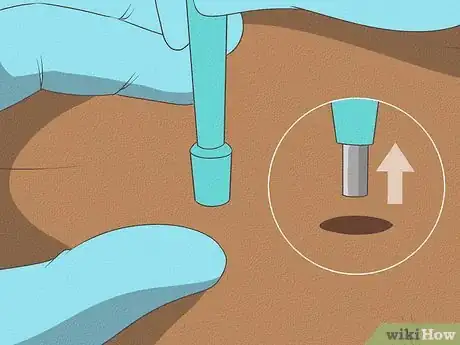











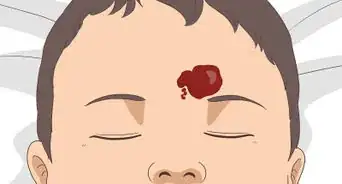
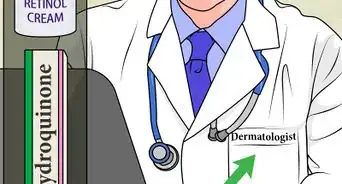




















































Medical Disclaimer
The content of this article is not intended to be a substitute for professional medical advice, examination, diagnosis, or treatment. You should always contact your doctor or other qualified healthcare professional before starting, changing, or stopping any kind of health treatment.
Read More...